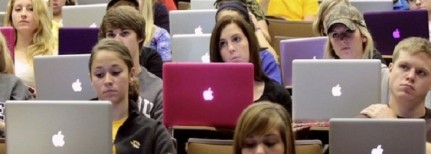
The correlation between physical activity and academic performance has long been a subject of interest among researchers and educators. Dance, as a form of structured physical activity, has garnered attention for its potential impact on cognitive development and academic achievement. While dance is often admired for its artistic expression and physical benefits, there is growing evidence suggesting that it also plays a significant role in shaping a child’s academic success. In this article, we will delve into the influence of dance on academic performance, examining the cognitive and psychological mechanisms that underlie this relationship, and exploring the implications for educational practices.
1. Cognitive Benefits of Dance: Enhancing Brain Function
Dance engages various cognitive processes, contributing to improved brain function that can positively affect academic performance. When children learn dance routines, they must memorise sequences of movements, requiring the use of working memory. This exercise of memory and recall strengthens cognitive abilities, facilitating better retention and application of academic concepts.
Additionally, dance involves complex motor skills and coordination, stimulating neural connections and promoting neuroplasticity—the brain’s ability to reorganise and adapt. These enhanced neural connections are thought to improve learning and information processing, contributing to better academic performance in subjects such as mathematics and language.
2. Physical Fitness and Academic Success
Physical fitness has been consistently linked to academic achievement. Dance, with its dynamic and energetic nature, contributes significantly to improving cardiovascular health, endurance, and muscular strength. Regular participation in dance classes can lead to better overall physical fitness, which, in turn, can positively impact a child’s cognitive function and academic performance.
Studies have shown that physically fit children often exhibit higher levels of focus and attention in the classroom, leading to increased productivity and academic engagement. The improved blood flow and oxygenation to the brain during physical activity also support enhanced cognitive function, promoting optimal conditions for learning and knowledge retention.
3. Stress Reduction and Emotional Regulation
Dance serves as a stress-relief mechanism, aiding in emotional regulation, which can have significant implications for academic performance. The demands of schoolwork and extracurricular activities can sometimes lead to elevated stress levels in children. Dance classes provide an outlet for emotional expression, helping children process and manage their emotions effectively.
Engaging in dance allows children to disconnect from academic pressures momentarily, alleviating stress and anxiety. This emotional well-being contributes to improved focus and concentration in the classroom, enabling children to perform at their best academically.
4. Boosting Self-Confidence and Motivation
Dance classes often involve individual and group performances, presenting opportunities for children to showcase their skills and creativity. The positive feedback and sense of achievement received from these performances can significantly boost a child’s self-confidence and self-esteem.
As children experience success and recognition in dance, they develop a growth mindset—a belief in their ability to learn and improve through effort and practice. This growth mindset translates into their academic pursuits, fostering a willingness to take on challenges and persevere in the face of obstacles.
5. Enhancing Social Skills and Teamwork
Dance classes provide a collaborative environment where children interact with peers and instructors. Engaging in group dances fosters teamwork, communication, and cooperation. These social skills acquired in dance classes are transferable to the academic setting, enhancing classroom dynamics and encouraging positive interactions with peers and teachers.
Moreover, the camaraderie and sense of belonging that children experience in dance classes create a supportive community. This social support network can positively impact their emotional well-being, making them more resilient in dealing with academic stressors.
6. The Intersection of Creativity and Academic Performance
Dance is an art form that nurtures creativity and self-expression. As children engage in creative movement, they develop imaginative thinking and problem-solving skills. This cultivation of creativity can spill over into their academic endeavours, encouraging them to approach subjects with innovative perspectives and develop unique solutions to challenges.
Furthermore, dance can be integrated into the academic curriculum to facilitate learning in various subjects. For example, dance can be used to teach historical events through reenactments or to understand scientific concepts through physical demonstrations. This interdisciplinary approach can enhance academic engagement and retention of information.
Conclusion
In conclusion, dance’s influence on academic performance extends beyond physical and artistic benefits. Engaging in dance classes enhances brain function, physical fitness, and emotional well-being. This leads to improved focus and attention in the classroom, fostering a growth mindset that empowers children to excel academically. Moreover, dance nurtures social skills and teamwork, creating a supportive community that fosters resilience in handling academic challenges. Integrating creativity into academics encourages innovative thinking and problem-solving abilities. Embracing dance as a valuable tool for holistic development can pave the way for a fulfilling academic journey, empowering children to reach their full potential.









